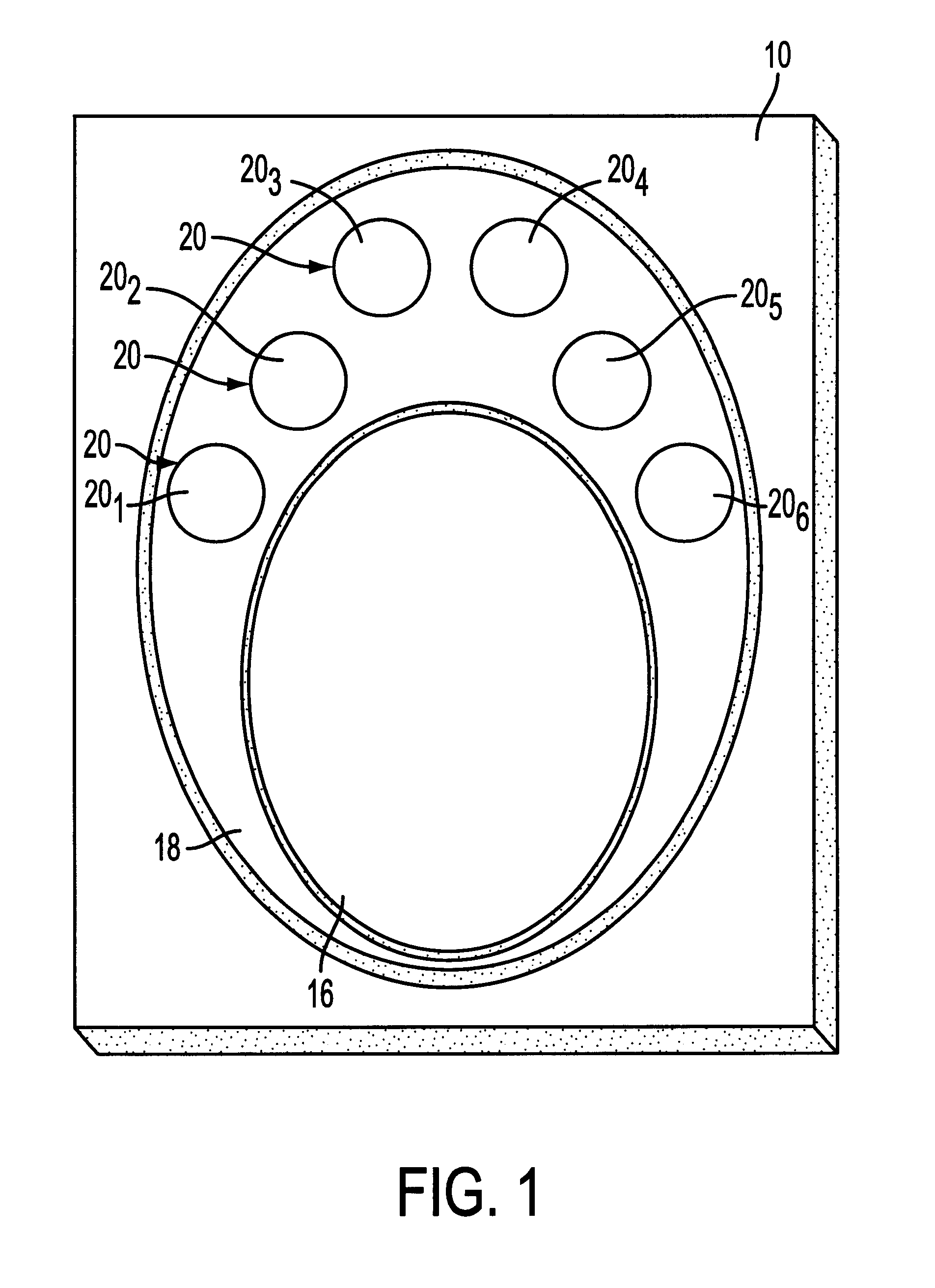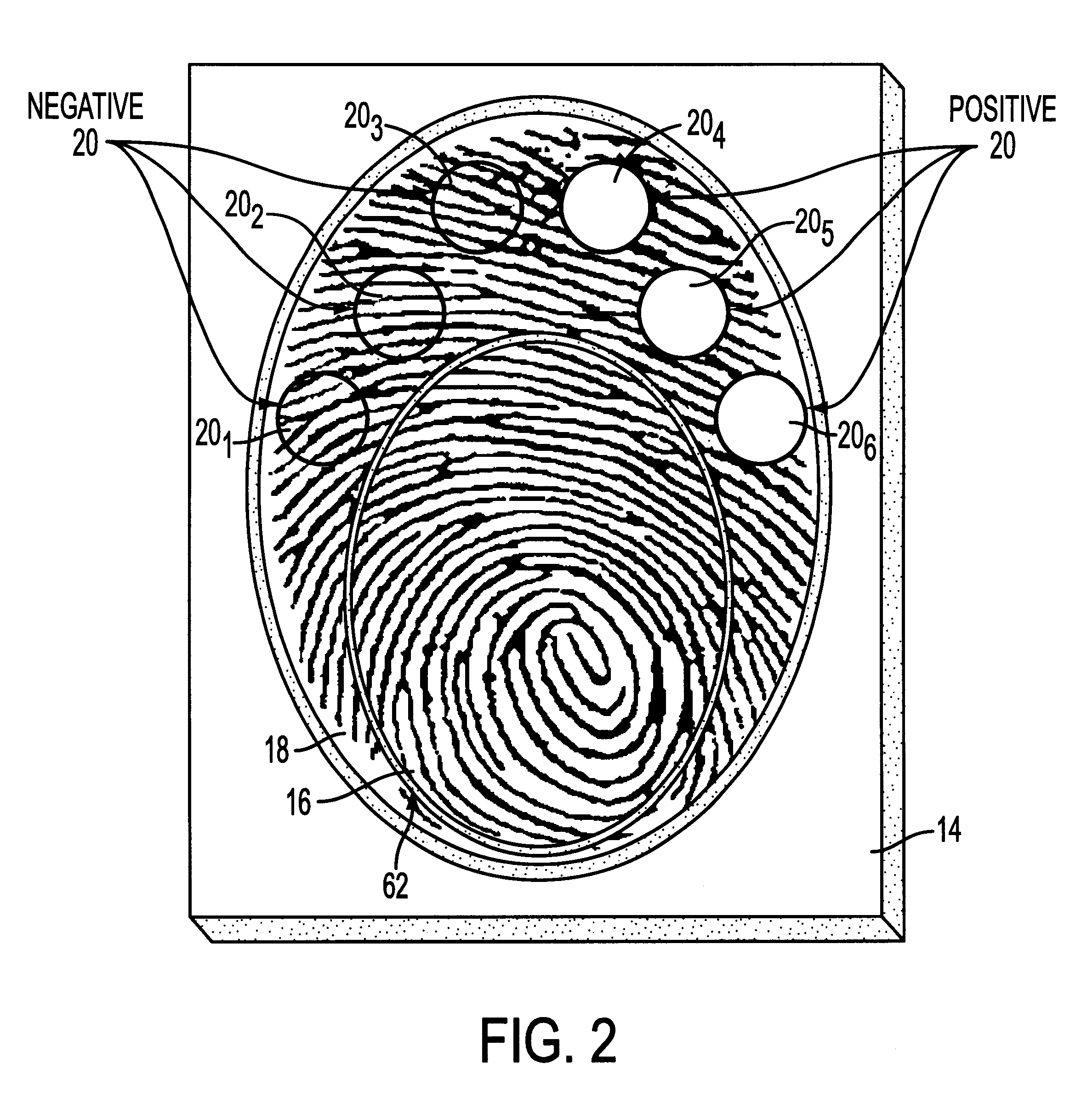Assay device
a technology of assay device and assay fluid, which is applied in the direction of instrument, person identification, diagnostic recording/measuring, etc., can solve the problems of inability to specifically identify, inability to obtain assay fluid in time, and mixed test fluid,
- Summary
- Abstract
- Description
- Claims
- Application Information
AI Technical Summary
Benefits of technology
Problems solved by technology
Method used
Image
Examples
example6 1
One embodiment of a immunoassay device of the present invention was prepared according to the following procedure. A reaction zone was constructed by embedding polystyrene particles, coated with human serum albumin-benzoylecgonine (HSA-BE), in one portion of a low protein binding polysulfone membrane (Gelman Supor membrane) mounted on a porous support. A control zone 16 was constructed by embedding polystyrene particles, coated with goat anti-mouse antibody, in a different portion of the membrane. A representative schematic cross section of the reaction and control zones is shown in FIGS. 3 and 4.
The assay device was prepared according to the following procedure. The reaction medium was first rinsed with a blocking buffer solution (Solution A) consisting of 2% polyvinyl alcohol (PVA), 1% glycine and 0.05% TWEEN-20 (polyoxyethylenesorbitan monolaurate) in a phosphate buffered saline solution. The central well of the immunoassay device (control zone 16) was spotted with a dilute solut...
example 2
A saliva sample was obtained from a person to be tested for the presence or absence of benzoylecgonine. A 200 microliter aliquot of a dilute solution of mouse anti-benzoylecgonine immunoglobulin G (mouse anti-BE IgG) in a phosphate buffered saline, which contained 0.1% bovine serum albumin (BSA) and 0.05% TWEEN-20, was added to a 200 microliter aliquot of the saliva sample. The resulting mixture was allowed to incubate for three minutes. During this incubation period, 400 microliters of Solution A was added to the reaction medium of the immunoassay device prepared in Example 1 and allowed to drain through the reaction medium. The mouse anti-BE IgG / saliva mixture was then added to the reaction medium and allowed to incubate for two minutes. Another 400 microliter aliquot of Solution A was then added to the reaction medium and allowed to drain. After the Solution A had finished draining, a finger of the person who had provided the saliva sample was painted with 15 microliters of a dil...
example 3
An immunoassay device is prepared according to the procedure of Example 1 except that the device contains six reaction zones for different analytes. Each reaction zone contains polystyrene particles coated with a different analyte conjugate embedded in the membrane. Reaction zones 20.sub.1 -20.sub.6 contain polystyrene latexes coated respectively with cocaine (20.sub.1), opiates (20.sub.2), PCP (20.sub.3), amphetamine / methamphetamine (20.sub.4), tetrahydrocannabinol (20.sub.5) and alcohol (20.sub.6) as the analytes (as shown in FIG. 1). The central control zone 16 is prepared as in Example 1 with polystyrene particles, coated with goat anti-mouse immunoglobulin G, embedded in the membrane.
A saliva sample is obtained from a person to be tested for the presence or absence of the six analytes. A 200 microliter aliquot of a dilute solution of mouse anti-analyte immunoglobulin G for each of the six different analytes in a phosphate buffered saline (hereinafter "mouse anti-analyte IgG Sol...
PUM
| Property | Measurement | Unit |
|---|---|---|
| pressure | aaaaa | aaaaa |
| pressure | aaaaa | aaaaa |
| pressure | aaaaa | aaaaa |
Abstract
Description
Claims
Application Information
 Login to View More
Login to View More - R&D
- Intellectual Property
- Life Sciences
- Materials
- Tech Scout
- Unparalleled Data Quality
- Higher Quality Content
- 60% Fewer Hallucinations
Browse by: Latest US Patents, China's latest patents, Technical Efficacy Thesaurus, Application Domain, Technology Topic, Popular Technical Reports.
© 2025 PatSnap. All rights reserved.Legal|Privacy policy|Modern Slavery Act Transparency Statement|Sitemap|About US| Contact US: help@patsnap.com



